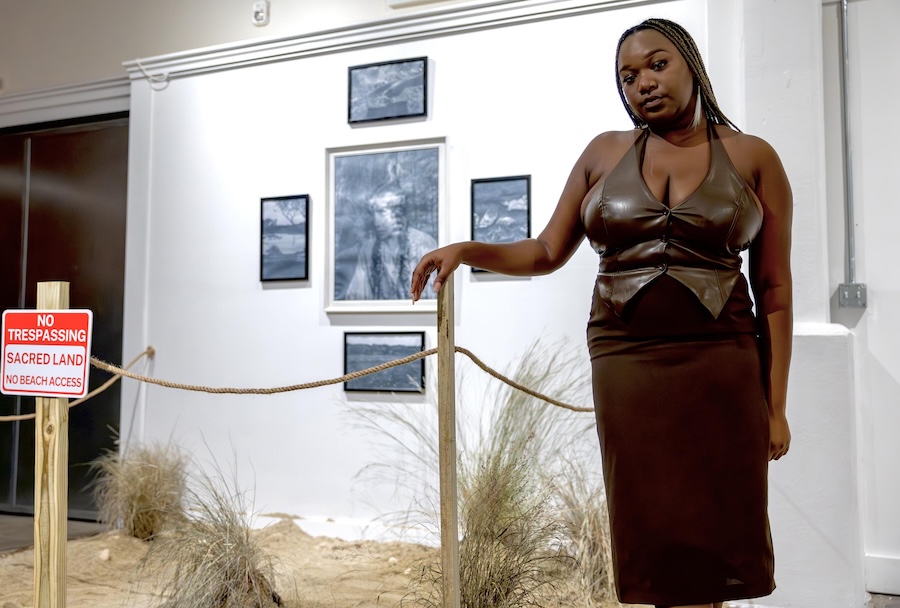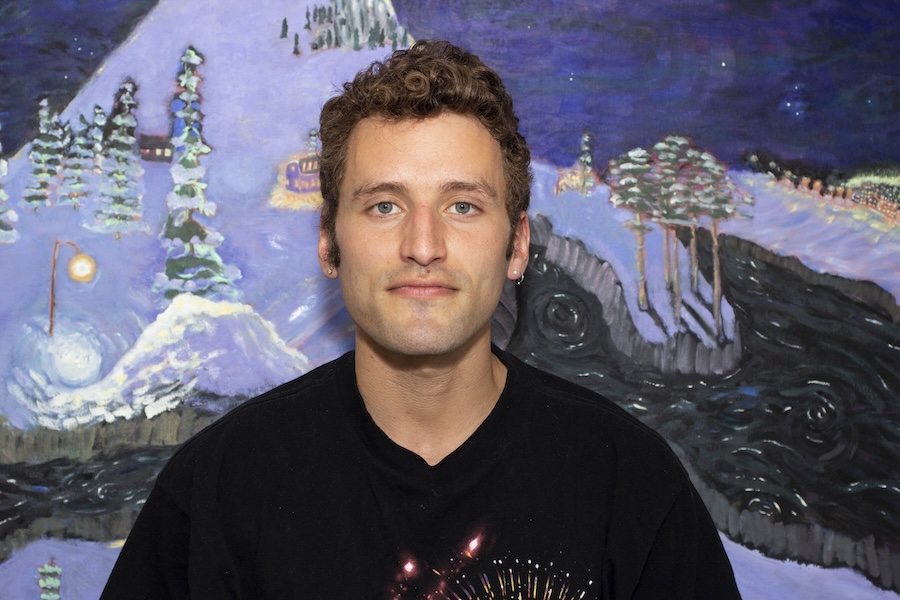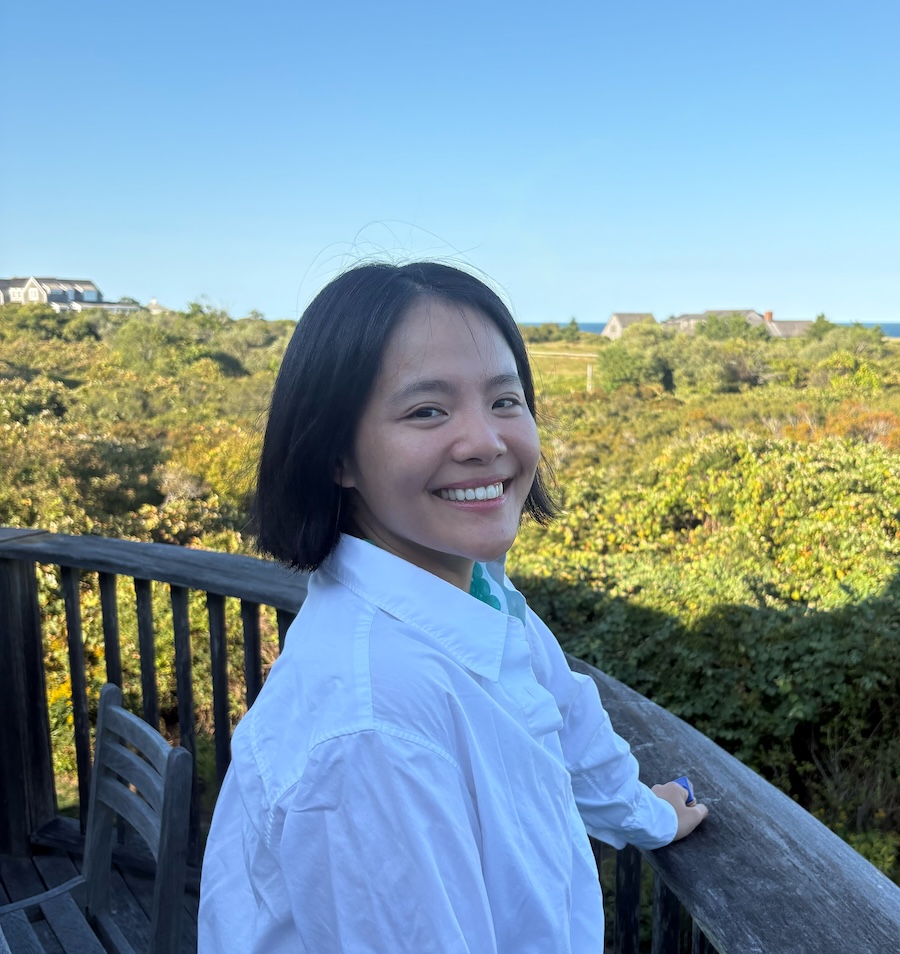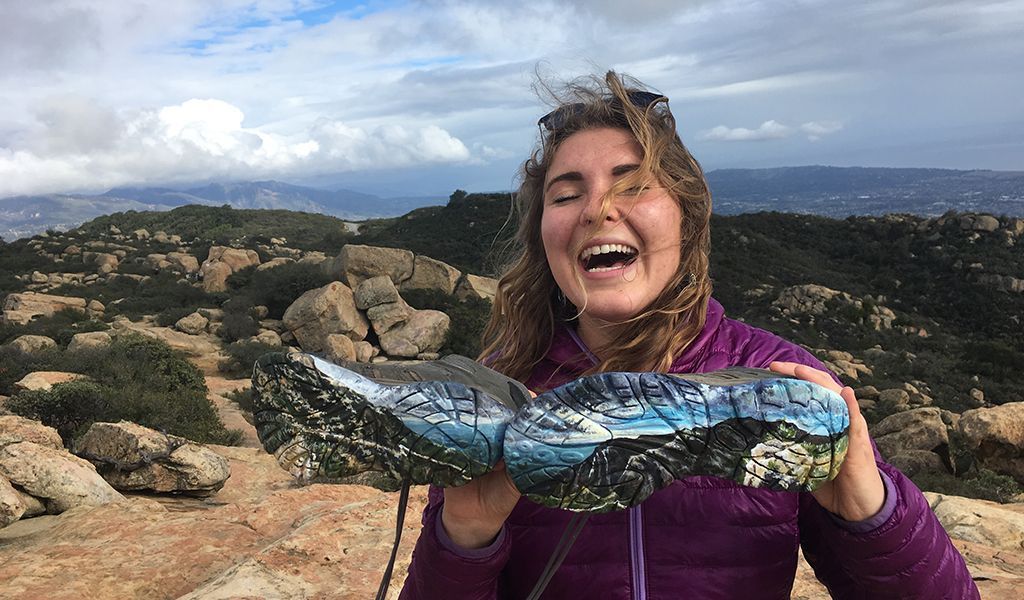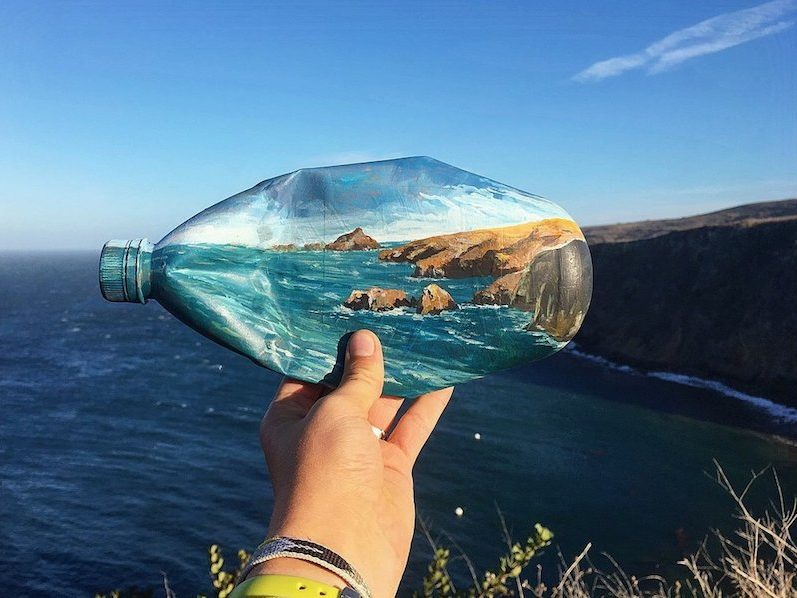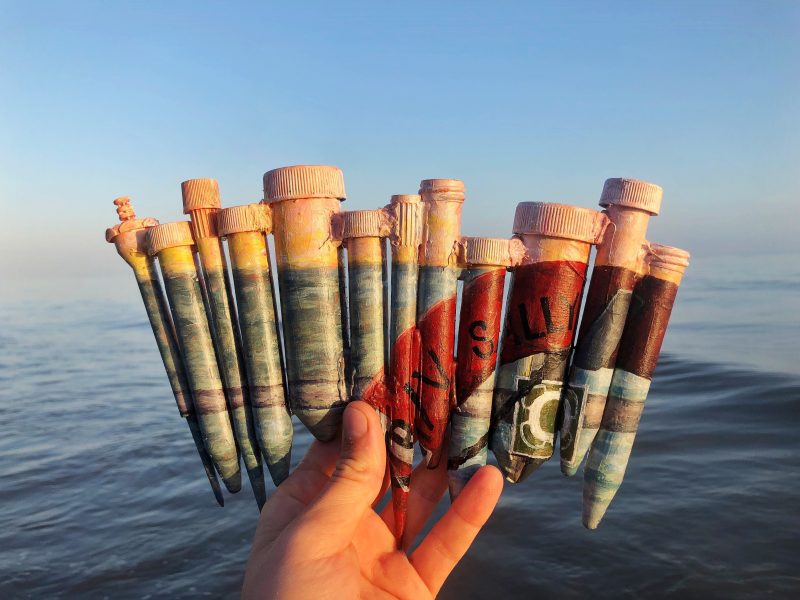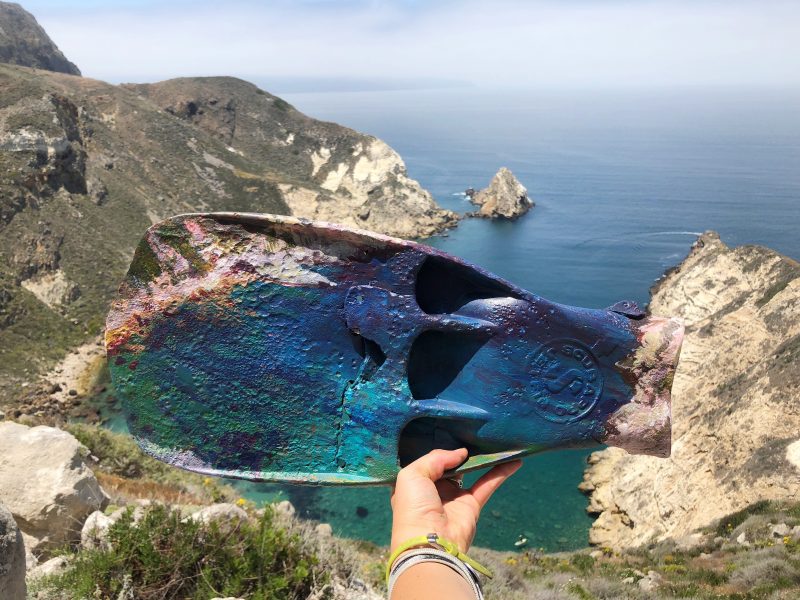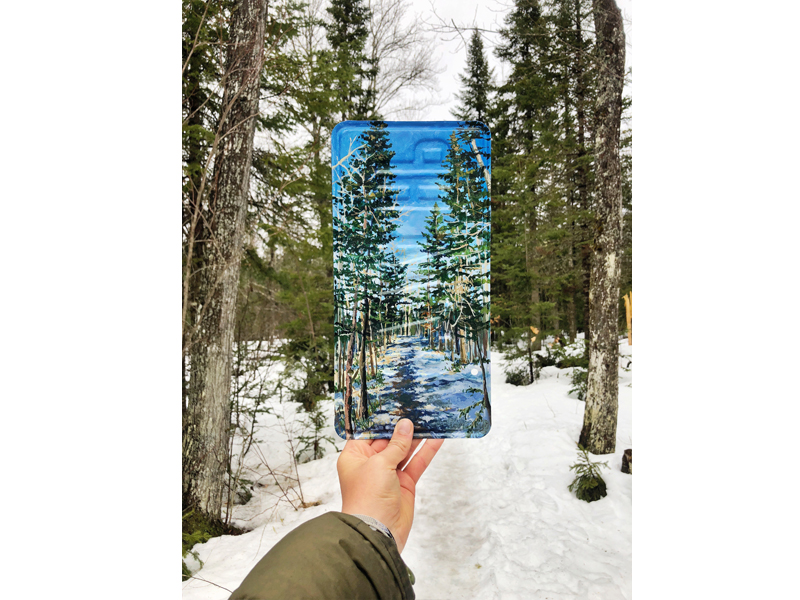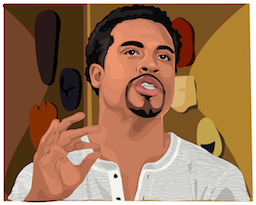What have you been up to since graduating from Bowdoin?
Since graduating, I’ve worked across different areas of the arts while building a steady studio practice. I’ve exhibited work in Poughkeepsie galleries, debuted my first solo installation Beauty in Remembrance (2022) on Noepe (Martha’s Vineyard), which was featured in the MV Times, and in March of this year (2025), I participated in The Destiny at Ann Street Gallery in Newburgh, New York, which was featured in Hyperallergic. My Afro-Indigenous heritage is central to my art practice and daily life. In 2024, I joined the Chappaquiddick Tribe of the Wampanoag Indian Nation’s Tribal Council.
From 2021 to 2024, I worked at an arts nonprofit in Poughkeepsie, where I helped establish a youth arts district, organized programs and an annual festival, and taught teens to use art as a tool for expression and civic engagement. Currently, I serve as the Marketing and Digital Initiatives Post-Baccalaureate Fellow at the Frances Lehman Loeb Art Center at Vassar College, where I lead digital engagement and amplify the voices of students, artists, and the local community. I’m also preparing to pursue an MFA in the near future.
Why visual arts?
Before even arriving at Bowdoin in 2017, I knew I wanted to take an art class. I couldn’t imagine my college experience without it. Art has always been central to how I understand myself and the world. During my sophomore year, I had a transformative experience that shaped both my studies and my practice, ultimately leading to my thesis, “Analyzing Black Representation in the Teaching of Visual Arts” (2021). That project critically examined the history of art at Bowdoin from its founding to the present.
I ended up majoring in visual arts, Africana studies, and art history. This combination was intentional and provided a framework to think critically about representation, or the lack thereof, in the arts and in education. Each discipline informed the others and pushed me to ask deeper questions about identity, systemic racism, and belonging. Visual arts, in particular, gave me a way to translate those questions into a visual language, exploring themes in my practice that I continue to pursue today. I’m especially grateful that the major gave me the freedom to experiment, take risks, and explore expression in ways that felt both personal and necessary.
Are there any classes, professors, or experiences that had a lasting impact on you?
My mentors, Professors Judith Casselberry, Dana Byrd, and Carrie Scanga, were incredibly influential. Professor Byrd’s course African Americans in Art gave me a strong foundation for understanding the crucial contributions of Black artists to the canon. With Professor Scanga, I had the opportunity to do an independent study in 2020 alongside Amie Sillah ’20 and Amani Hite ’20, where I first began to explore new materials and narrative work connected to my cultural identity. Those moments of encouragement and experimentation had a lasting impact on both my practice and my perspective.
What advice would you give to current students or recent graduates?
Remember your why. Being an artist doesn’t look one way, and it’s important to let go of the pressure to fit into a single mold of what an “artist” is supposed to be. For me, that meant creating work that felt authentic to my story rather than chasing an external idea of success. I also chose not to go to graduate school right away because I wanted the space to explore my practice on my own terms. That decision helped me refine my vision and clarify what drives me. I’d encourage students and recent graduates to give themselves permission to grow at their own pace. Most importantly, make art sustainably. It’s a long journey. You don’t need to constantly create to prove you’re an artist: living life, resting, and seeking inspiration in everyday experiences are just as vital to the process.
